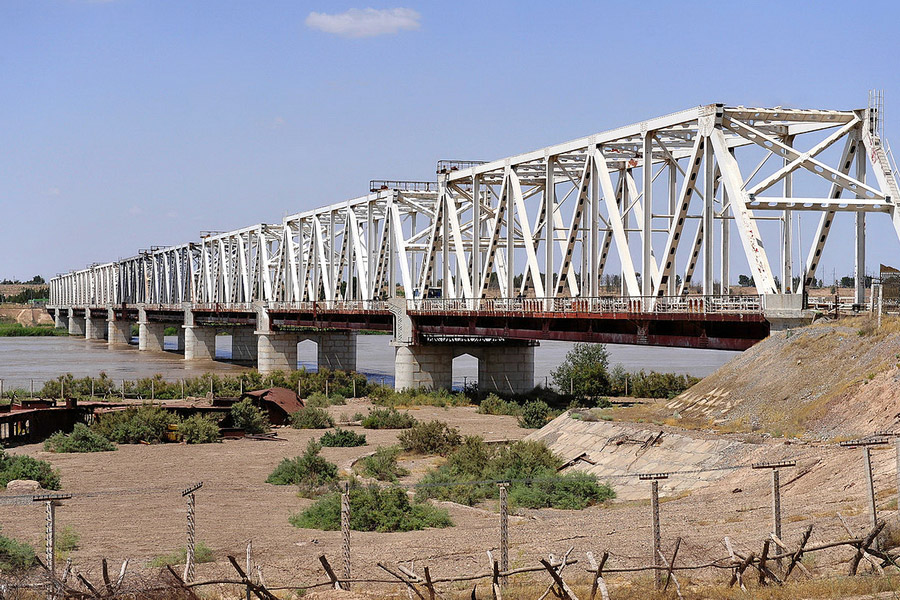
One of the Termez attractions is the famous Friendship Bridge, the only one on the southern border between Uzbekistan and Afghanistan connecting Termez with Hayraton, the Afghan port.
More than a century ago, in place of the Friendship Bridge, there was first a wooden and then iron bridge through Amu Darya. The first wooden bridge was built under the supervision of the Russian tsarist army general M. Annenkov in May 1888, when Russia was just starting to develop Central Asia. At that time the construction of the Trans-Caspian Railway was underway and a crossing means across the Amu Darya was badly needed.
The Amu Darya railroad bridge running nearly three kilometers was strengthened with wooden piles. It was announced the largest feat of engineering of that time. Alas, the bridge was in operation only 14 years: due to the river rapid flow and the sandy bottom, the bridge began to collapse and very soon became unserviceable.
At the beginning of the XX century the Trans-Caspian Railway was renamed to the Central Asian Railway, since it had covered the whole of Turkestan by that time. The traffic through the Amu Darya Bridge became so intensive that it required urgent modernization.
The construction of a new ferry, now a railway, started in 1902. The Russian government allocated for bridge construction 5 million rubles - a good deal of money in those times. The construction was supervised by the outstanding engineer S. Olshevsky, who already had an experience in building large bridgeworks in West Siberian, Aral Sea, etc. For the rebellious Amu Darya, he designed a durable railway bridge of 27 spans, which became one of the world’s largest structures of that kind at the time. The bridge was built to last. Maybe that is why the next facility "upgrade" took place only 77 years later, in the Soviet period.
The current 816-m long rail-motor bridge was built by Soviet builders in 1981 in the heat of the Afghan war. That year a partial withdrawal of Soviet troops from Afghanistan through this new bridge started, and the bridge was symbolically named the Friendship Bridge, as an expression of hope for an early end of the war and the establishment of friendly relations between the nations. In 1989, it was this bridge, where the withdrawal of Soviet troops from Afghanistan was triumphantly completed.
After the end of the Afghan war in the late 90s of the XX century, the Taliban captured the northern provinces of Afghanistan, and the Friendship Bridge was renamed to “Khayraton”. And, for reasons of safety, the bridge was closed. Its operation did not resume until 2001. The ceremonial opening of the bridge was heralded by dispatching of 16 wagons with humanitarian aid through it, and the bridge was again renamed to the Friendship Bridge. The current the bridge is in operation and used for freight traffic and haulage.

